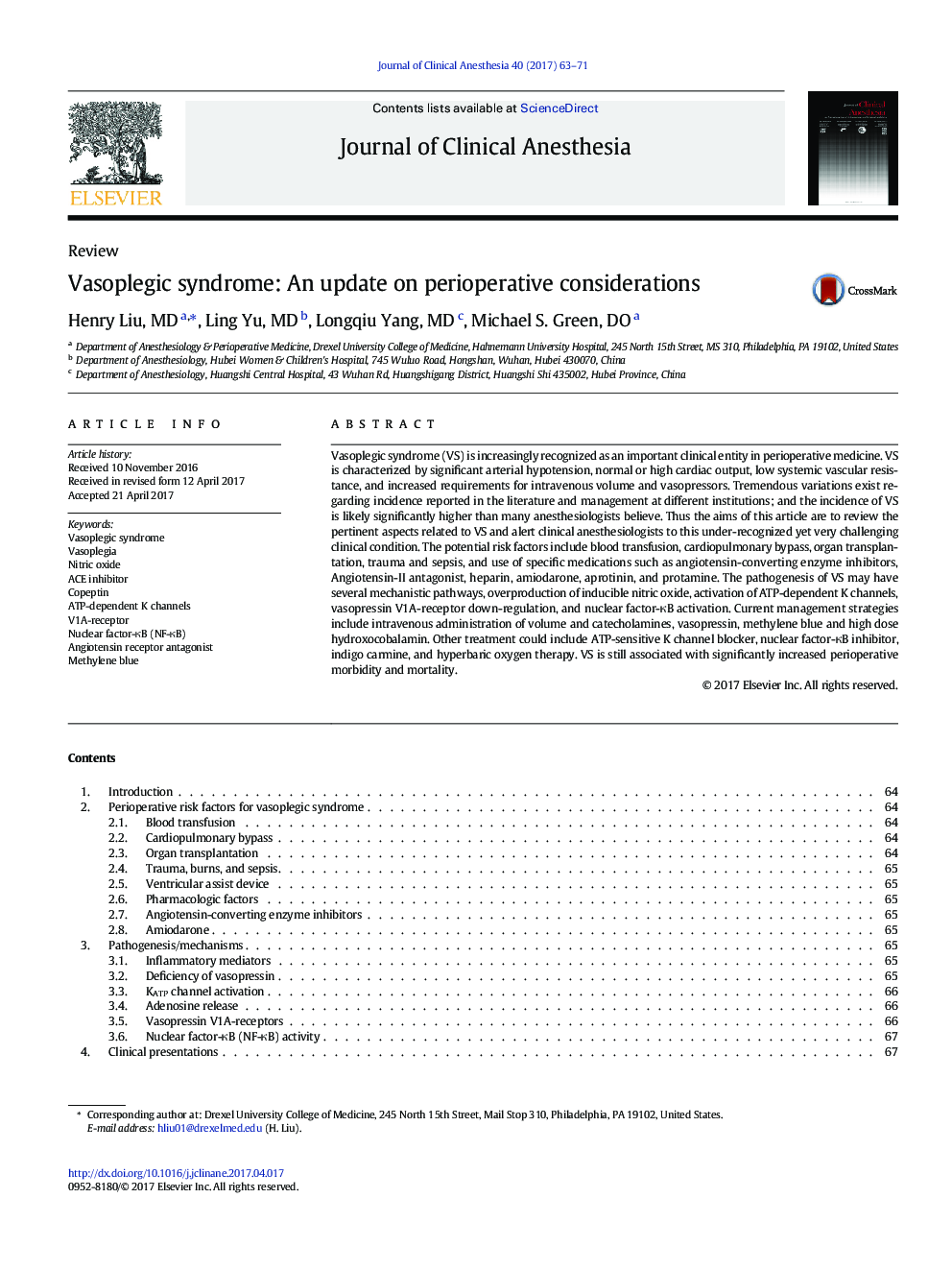| Article ID | Journal | Published Year | Pages | File Type |
|---|---|---|---|---|
| 5582913 | Journal of Clinical Anesthesia | 2017 | 9 Pages |
Abstract
Vasoplegic syndrome (VS) is increasingly recognized as an important clinical entity in perioperative medicine. VS is characterized by significant arterial hypotension, normal or high cardiac output, low systemic vascular resistance, and increased requirements for intravenous volume and vasopressors. Tremendous variations exist regarding incidence reported in the literature and management at different institutions; and the incidence of VS is likely significantly higher than many anesthesiologists believe. Thus the aims of this article are to review the pertinent aspects related to VS and alert clinical anesthesiologists to this under-recognized yet very challenging clinical condition. The potential risk factors include blood transfusion, cardiopulmonary bypass, organ transplantation, trauma and sepsis, and use of specific medications such as angiotensin-converting enzyme inhibitors, Angiotensin-II antagonist, heparin, amiodarone, aprotinin, and protamine. The pathogenesis of VS may have several mechanistic pathways, overproduction of inducible nitric oxide, activation of ATP-dependent K channels, vasopressin V1A-receptor down-regulation, and nuclear factor-κB activation. Current management strategies include intravenous administration of volume and catecholamines, vasopressin, methylene blue and high dose hydroxocobalamin. Other treatment could include ATP-sensitive K channel blocker, nuclear factor-κB inhibitor, indigo carmine, and hyperbaric oxygen therapy. VS is still associated with significantly increased perioperative morbidity and mortality.
Keywords
Related Topics
Health Sciences
Medicine and Dentistry
Anesthesiology and Pain Medicine
Authors
Henry MD, Ling MD, Longqiu MD, Michael S. DO,
